Ashitenma
Boat photograph courtesy of Mr. Shinsuke Inoue
-
I built this boat in 2013 as part of the summer session of the Setouchi Festivale, an international arts festival based in Takamatsu, Japan. Setouchi refers to this part of the Inland Sea, and over 200 artists from forty-two countries created installations, mainly on seven islands off the coast from Takamatsu.
Mr. Koji Matano, a builder of Western boats and canoes in Japan, helped me put together my application for the Festivale and also gathered all the materials. I originally applied for the Festivale with the intention of working with Mr. Takashi Tsuda, an 84-year old boatbuilder from Naoshima, one of the Setouchi islands. Unfortunately he became to ill to work but the Festivale invited me to build a traditional boat in Takamatsu in a venue called Bengal Island. -
Bengal Island consisted of another major art and craft center, featuring over two dozen craftspeople from Bangladesh, including two boatbuilders. I was there, working with my apprentice Mr. Takumi Suzuki and Koji Matano. Many visitors to our site very surprised to find that the chief boatbuilder was an American and that the apprentice was Japanese. Takumi is the second Japanese apprentice I have taught; the first I taught the craft of building tub boats on Sado Island. He now builds cedar-canvas canoes in Fukushima.
The Seto Inland Sea-Folk Museum provided us with a lines drawing for an ashitenma that dated from the 1950’s. I had no construction details, but after several visits to the museum looking at similar boats, and in consultation with their chief curator, I came up with a reasonable approximation for this type of boat. Late in the project we visited Takashi Tsuda and he gave us more construction details and also told us how to properly conduct a launching ceremony. -
The planking was cedar from Tokushima. The stem and beams were hinoki (cypress). Mr. Tengu Shibafuji, an enthusiastic student of Japanese boatbuilding, donated boat nails to the project. Like most Japanese boats we built the boat right side up and worked right on the shop floor. In lieu of clamps we propped most pieces in place against the shop roof and floor. We covered the heads of our boat nails, along with the stem rabbet and other details, with copper plating.

The ashitenma on launch day. The young bamboo is a common decoration.

Mortises for the edge-nails that join the two planks that make up the plank keel (kawara) of the boat.
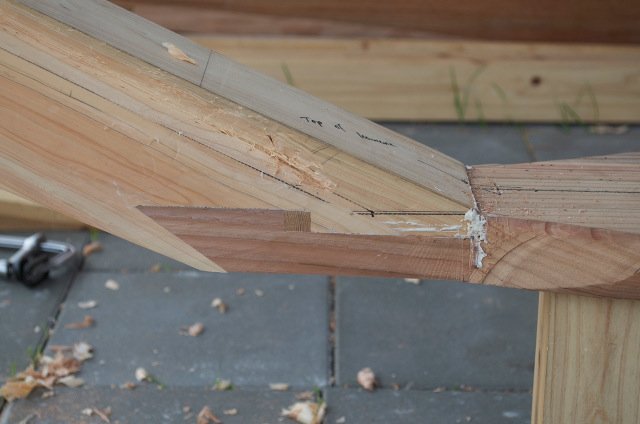
The bite scarf, called a kama tsugite, that fastens the stem and keel plank.
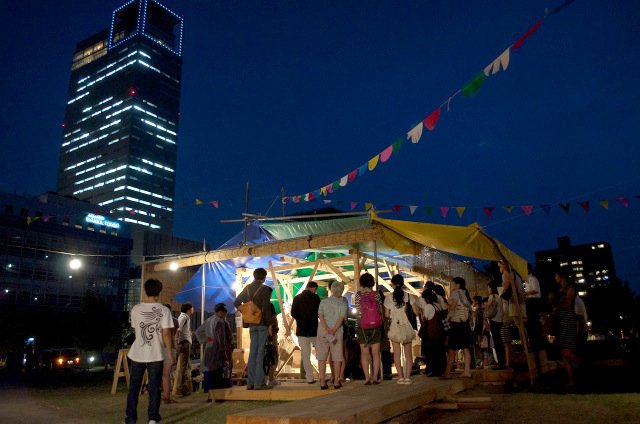
We worked in a temporary shelter put up by the Festivale in the Port of Takamatsu, Japan.
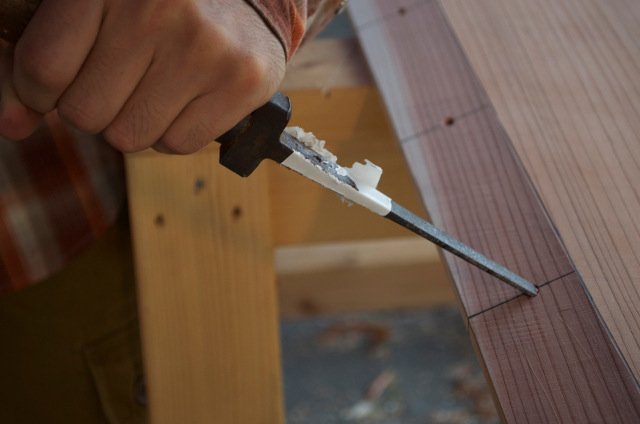
Using the tsubanomi, a special chisel for piloting nail holes.
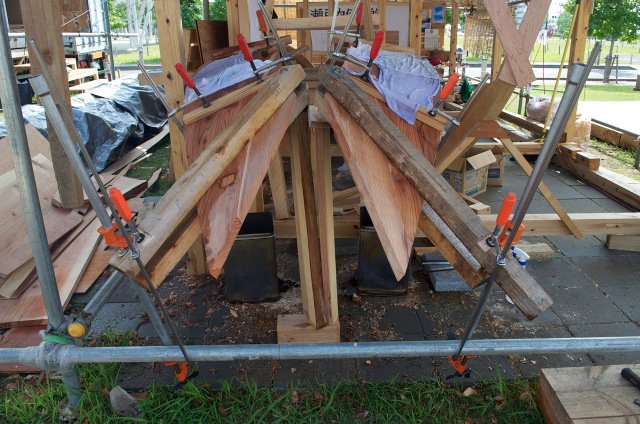
Bending the garboard planks (kajiki) over wood fire. Japanese boatbuilders pre-bend their planks off the boat.

The first plank fastened on the boat.
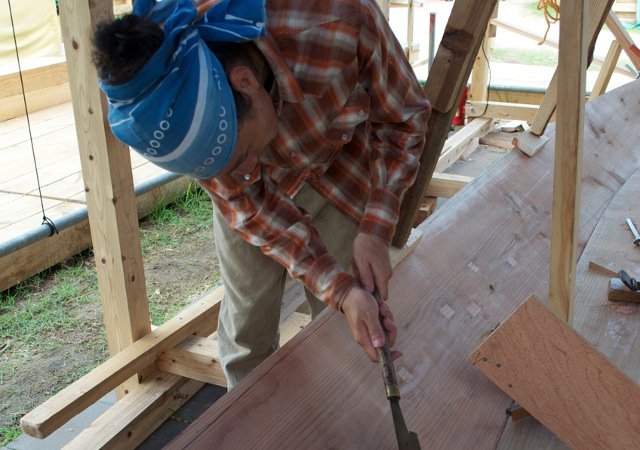
My apprentice Takumi Suzuki fitting first plank to the keel using a special saw.
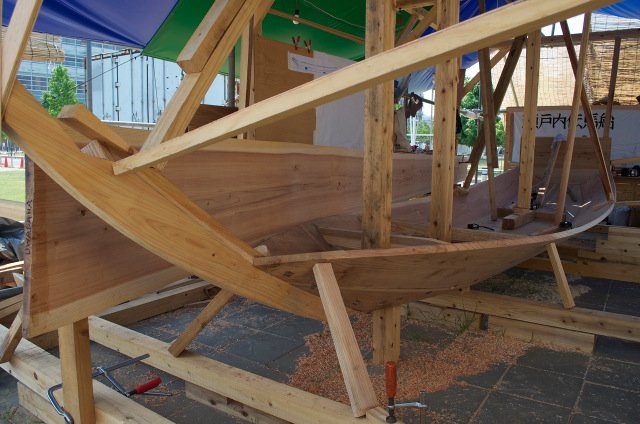
The sheer plank being wrapped around the boat before tracing its shape.

Clamping and propping both sheer planks in place prior to fastening.

Japanese boatbuilders use props in lieu of clamps.

Nail heads were set in shallow mortises that were then covered with copper plate.

The view from the stern showing how the planks run past the transom.
